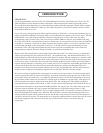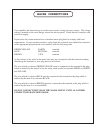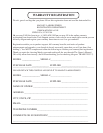
INTRODUCTION
THANK YOU!...
for choosing the Manley Neo-Classic SE / PP 300B Monoblock Amplifiers. The Manley Neo-Classic SE / PP
300B Amplifiers use only the best available components, with the shortest and cleanest signal path possible.
These amps have the unique ability to switch from Single ended to Push-Pull topologies and the ability to adjust
the amount of negative feedback in 1 dB steps. This amp is designed to provide our customers with a versatile
little amplifier that can do it all.
Let us start out by stating our opinions about amplifier topologies. Historically, we have been manufacturing very
highly regarded tube amplifiers since before tubes were considered the best option for hi-fi music lovers. We have
manufactured a very wide range of amplifiers with power ranging from 15 watts to 800 watts and with a
corresponding variety of tubes. This is not our first amp to feature 300Bs nor our first single ended triode amp.
We build a $15,000 70+ watt single ended amp on a custom basis. In our experience, the more power an amplifier
is capable of - the better it will be at providing acceptable low frequency quality. It is not easy to produce a very
powerful amp with highs of the same quality as the lows. To do that we had to start manufacturing our own
transformers. This is the major development that allowed us to produce an amplifier that could switch from
single-ended to push-pull. We had to design and build a very unusual transformer first.
When several other manufacturers started selling single-ended amps with 5 to 9 watts of power, we understood
subjectively and objectively the good part of the story - the superb mid range - the delicate transient detail - the
inherent simplicity. The bad news was that there were almost no speakers efficient enough to be a dynamic viable
system. The worse news was that either these single-ended amps cost more than the condo or they had specs that
could only be a joke. As the triode fans increased, more efficient speakers became available and several fanatics
began to dismiss push-pull as a bad thing to be avoided at all costs. We objected to such blanket generalities and
stressed that the push-pull done right with truly balanced transformers, quality parts throughout and a well
designed circuit has proven to be a superb technique. We also like single ended amps, but few and far between,
mostly because we prefer a flat frequency response and low distortion. We knew could do it better.
We set out to design an amplifier that would appeal to us and to you and to the critics. It would be single-ended
with more power than most for fans of that topology. It would be switchable to push-pull for fans of that school
and for those who want it both ways - to compare for themselves, and to use each mode depending on the music.
We decided to further extend our own feature of variable negative feedback to a greater range - from none to 10
dB. Some prefer zero negative feedback and some prefer more. The advantage of a little negative feedback is
better specifications in general. Williamson, in 1947, not only described the advantages but described the loss of
some transient information with greater than 20 dBof feedback. We typically use 3 to 6 dB in other amps. Even
with zero negative feedback, this amp is cleaner and flatter than any single-ended amp we know of. One
interesting aspect of negative feedback is it gives a higher damping factor. Conventional wisdom would have us
think that the higher the damping factor - the better. Our experience is that the optimum damping factor is not
infinity and that it depends on the speaker, the room, and the taste of the listener. In other words, the optimum is
variability, and this we provide. This amp satisfies us as long time amplifier builders, amazes the critics in several
well known magazines and is bound to satisfy the you with the ability to fit into your system and your
expectations.














